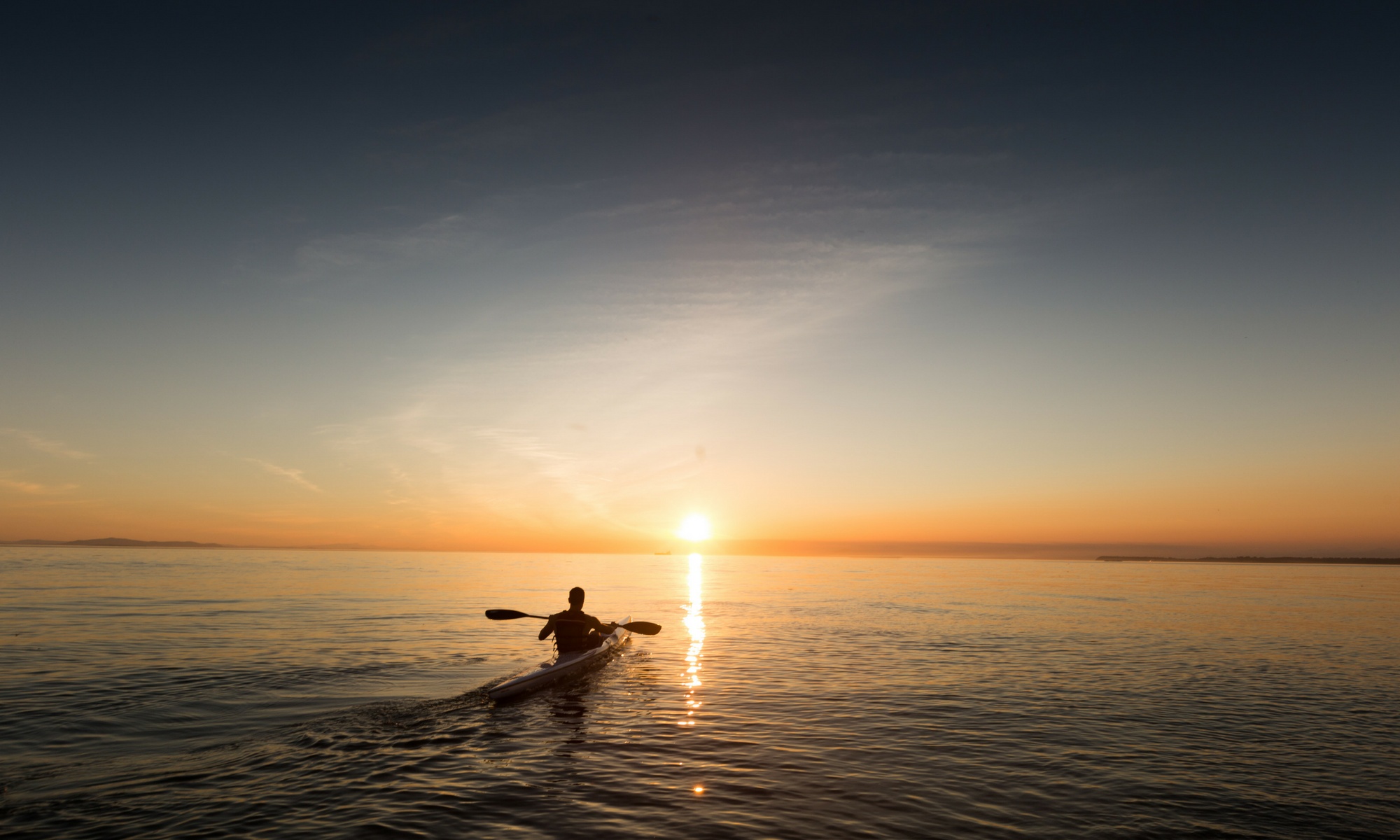Jump Ahead To:
Waterproof Kayak Cover
A Waterproof Kayak Cover is one of the most important pieces of kayak fishing gear to consider if you want to extend the life of your fishing kayak! If you want a quick refresher on kayak covers in general, KFC’s Ultimate Guide to Kayak Covers is a great resource. After brushing up, you’ll likely want to learn more about those kayak covers that have the added benefit of being waterproof – this article covers exactly that!
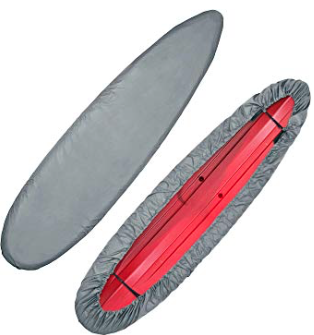
Waterproof Kayak Cover – Overview
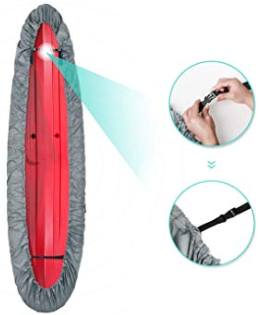
First, as an Amazon Associate, I earn from qualifying purchases.
You have landed on KFC’s guide to Waterproof Kayak Covers. This post contains all of the important information that you need to know for purposes of evaluating whether a particular kayak cover would be a good fit for your fishing kayak!
To make sure this article is well organized, we’ve decided to include a number of separate categories. We begin by going over some very basic information about waterproof kayak covers – What are they? What makes them waterproof? Why is waterproofing important? What sizes do they make? Does waterproofing also mean UV protection? And so on.
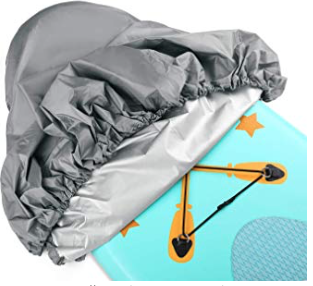
We follow the basics by adding a short “how to” checklist so that you can learn how to use a waterproof kayak cover – after all, even the best cover won’t protect you from the elements if you don’t know how to properly use it! Our hope is that you can use the checklist as an easy to remember takeaway so that you can remember the tips once you get to the water (assuming you don’t bring your laptop or smart phone, that is)!
Then we move into a listing of several of the most important features to look for when you are evaluating among the several different kinds of waterproof kayak cover that you’ll inevitably comes across on the internet or in outdoor stores. We go into detail on each important feature and describe why each of them is so important – especially for kayak fishermen!
We have included a link to the product page for a particular waterproof kayak cover that includes all of the important features that we’ve written about, and more! You can visit the product page to check out some additional details about that particular model of waterproof kayak cover. We have also included a short write up about our own experience using waterproof kayak covers – hopefully you can learn a thing or two from us and you can avoid making our mistakes!
Waterproof Kayak Cover – The Basics
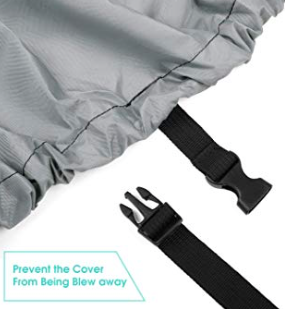
Please note: This post contains affiliate links. An affiliate link means that we may earn advertising/referral fees if you make a purchase through our links.
Shortcut to the Best Waterproof Kayak Cover
We’ve include a zoomed in image of a waterproof kayak cover above. We chose this particular image because it includes three of the features that you will generally, but not always, find in these types of products. The first is the waterproof lining (which is frequently a solid color – though came patterns exist as well). The second is the elastic banding along the outside edge, which sometimes exists as a drawstring instead of an elastic band. The third is the clip straps that are used as a fail-safe to keep the cover from blowing free from the kayak (like when you are using a kayak trailer).
The idea behind a waterproof kayak cover is pretty simple – to protect the exterior of the kayak from deterioration that would otherwise take place when the kayak is exposed to the elements. Of course, covers stretch over the top of the hull of the kayak, covering the cockpit, and they therefore act to protect the inside of the kayak as well (important to protect against collection of standing water, wasp nests, etc).
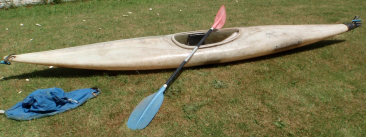
We typically find that waterproof kayak covers are manufactured such that they cover kayaks measuring anywhere from 6 feet to roughly 20 feet in length. They are often built of a canvas or premium polyester. Some waterproof kayak covers come with the added benefit of being UV resistant, which is a great added bonus in terms of all around protection.
Frequently we’ll encounter kayak fishermen who use the old fashioned “blue tarp” to cover their fishing kayaks. Sure, blue tarps are waterproof, but only if they properly “hug” the kayak (which they never do). We always suggest that our readers spend a little bit of extra money to buy a form fitting waterproof kayak cover. The form fitting nature will keep water or bugs from finding their way into the kayak in a way that the old fashioned blue tarp simply cannot do!
How to Use It!
- Find some level ground.
- Lay your kayak on the level ground.
- Unroll your waterproof kayak cover in front of or behind the kayak.
- Do your best to tug free any stuck corners or folded over parts of the cover.
- This is an especially important step when you are using the cover for the first time.
- Pick up the bow or stern of the kayak.
- We usually suggest covering from the bow and working your way to the stern.
- Slip the front of the kayak into the cover.
- Gently and evenly work the kayak cover along the edges and bottom of the kayak, ensuring that you do not pull the cover too far to one side which would result in a crooked cover that wouldn’t close quite right.
- Pull the elastic around the edges to ensure a snug fit.
- If you have a drawstring model, makes sure the drawstring is pulled tight and clamped.
- If you have safety straps and clips, now is the time to wrap them around the body of the covered kayak, then pulling them snuggly.
- Store your now covered kayak in a dry, temperature controlled area, preferably away from the sun. That’s its!
Waterproof Kayak Cover – Important Features

Quality Waterproof Material. The most effective waterproof kayak covers are made of high quality polyester. They seem to have the best longevity and the material is pretty easy to work with. Most polyesters are also quite resistant to ripping and tearing and, if they do rip or tear, there are plenty of repair kits that can result in quick and effective fixes. Here is a zoomed in image so you can see the waterproofing in action:
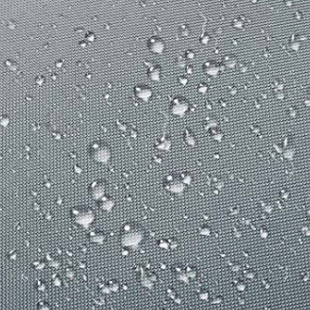
Even if you store your kayak inside (like on a garage rack) there is an added benefit to waterproofed material. Why? because you will invariably move your kayak to the water and the kayak will be exposed to the elements while in transit. Also, a high quality polyester is an effective barrier against dust, fumes and many other substances that could inadvertently find their way onto your kayak.
Easy Connection. There are two main method that we see in terms of ensuring a snug connection between the waterproof kayak cover and the hull of the kayak itself. The first is an exterior elastic band. The second is a drawstring. Some times these two features are combined into one (an elastic drawstring) an example of which is shown in the image below:
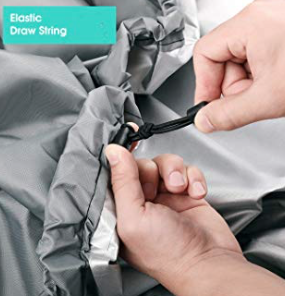
This is particularly important feature because it is THE VERY FEATURE that makes the waterproof kayak cover more effective that the “blue tarp” method that we earlier described. This “connection” will only be snug if there is a means (like the elastic band or drawstring) that will actually tighten around the kayak’s hull. Without this tightening, the kayak will be exposed to the elements, defeating the purpose of covering your kayak in the first place!
Easy to Use. Ok this is one of the very most important. There are many waterproof kayak covers that are made of materials that simply are not user friendly. Most of the time, the covers are made of a material that is either brittle or does not allow for its user to cover the kayak by him or herself because it simply isn’t flexible enough. If you take a look at the image below, you’ll see that the kayak cover depicted has several folds which are indicative of a material that is easy to work with. That’s what you want!
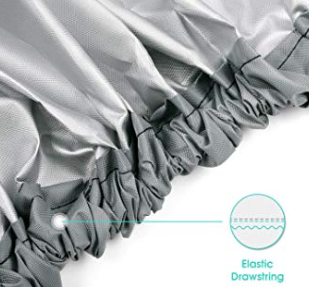
Another “ease of use” factor is the ease with which the waterproof kayak cover can be folded up and placed back into its bag, into a void in the kayak’s hull, or even back into the garage closet. If the material is such that, once expanded, it won’t collapse or fold back down into a useable and small size, then you’ll likely quickly become frustrated and you’ll end up being tempted not to use the cover in the first place – the exact opposite result of what we are looking for!
Buy the Waterproof Kayak Cover
(Commissions Earned)
KayakFishingCorner.com set out to evaluate a number of different waterproof kayak covers to see which one we felt was the very best. We evaluated them in terms of materials, connection method, ease of use, and countless other metrics. While it was a close race once we got down to the final 2 or 3, we emerged with a clear winner. We have linked to it above and described it below.
It is constructed of “oxford polyester” which is great in terms of waterproofing (and comes with the added benefit of being UV protective). It is a nice silver color which is a good touch in terms of reflecting the bright rays of the sun rather than absorbing them like a black or camo colored cover might do.
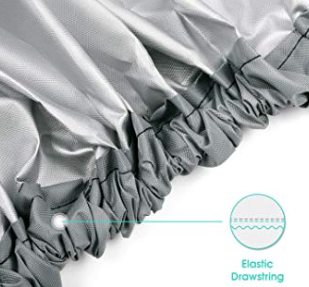
There are two different sizes. The smaller of the two will fit kayaks that are 10.7ft ~ 11.4ft in length, and the larger of the two will fit 11.8ft~13.1ft kayaks. These two sizes cover most of the different kinds of kayaks on the market (except for some of the tandem sea kayaks, for which you will need to find a larger sized cover).
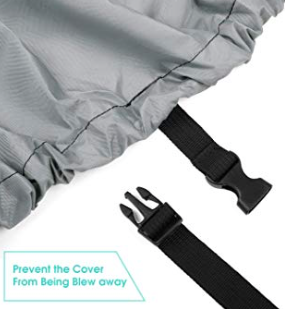
From the image above you can see that the cover includes the two critical connection points. There is an elastic drawstring that runs around the outer edge of the cover as well as a “clip strap” which will run underneath the covered kayak to add an extra layer of security in terms of preventing a “blow off” during highway travels or strong winds!
My Experience

I actually bought a waterproof kayak cover at the same time as my kayak purchase. Perhaps this was clever marketing by the outdoors shop, because the covers were located right next to the kayaks. Either way, I am very glad that I did because I have noticed that my fishing buddies’ kayaks have begun to fade in color over the years (they do not cover their kayaks because they store them in their garage and think they don’t need to be covered – wrong!). One of their kayaks has even deteriorated to the point that he has had to make a few expensive repairs!
While there is certainly some increased cost associated with a waterproof kayak cover instead of a “blue tarp”, it is actually one of the least expensive pieces of kayak fishing gear (as opposed to something like a kayak stabilizer for kayak fishing). Better yet, it actually pays for itself over the years in terms of damage or deterioration prevented from occurring to your kayak! Anytime we can suggest a product that pays for itself like the waterproof kayak cover, I feel like we have done our job. Buy one for yourself and let us know what you think – you’ll be glad you did!
Waterproof Kayak Cover: Summary
I hope KayakFishingCorner.com has written yet another post that has ben helpful in furthering your knowledge about kayak fishing gear – and particularly about the different kind of waterproof kayak cover products in the marketplace!
While we could keep on writing about this particular topic for days on end, we have to stop somewhere! If we have not written enough about a particular topic that you are interested in, please be sure to write directly to us by posting in the Comments section below! We read and reply to all comments and absolutely love interacting with kayak fishing community members!
Ready to take your kayak fishing skills to the next level? Take a look at entering a kayak fishing tournament, here!
Comments
Did you know that waterproof kayak covers were so important for preserving the longevity of your fishing kayak? Have you ever stored your kayak without a waterproof kayak cover and suffered the consequences? Have you noticed how much “life” you are able to get out of your kayak by keeping it safe from the elements? Please be sure to post in the Comments board below to share your story! We love hearing from you!
